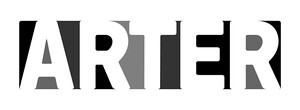Bilge Friedlaender: Words, Numbers, Lines
October 14, 2016–January 15, 2017
Irmak Caddesi No: 13
Dolapdere Beyoğlu
34435 Istanbul
Turkey
T +90 212 708 5800
F +90 212 708 9800
info@arter.org.tr
Arter presents Nil Yalter and Bilge Friedlaender’s concurrent solo exhibitions between October 14, 2016 and January 15, 2017.
Nil Yalter’s solo exhibition entitled Off the Record is a thematic overview of her hybrid installations that combine painting, photography, writing, collage, performance, and video. Curated by Eda Berkmen, Off the Record brings together works exploring individual’s strategies for survival in the face of society’s control mechanisms and norms, focusing on omitted facts, invisible people, enclosed places and repressed emotions.
Bilge Friedlaender’s solo exhibition entitled Words, Numbers, Lines is curated by Mira Friedlaender and Işın Önol, and brings together works that have not been shown in Turkey nor have been exhibited elsewhere since the 1980s. Words, Numbers, Lines also marks the artist’s first solo exhibition since she passed away in 2000.
Nil Yalter: Off the Record
As a Marxist-feminist and an immigrant herself, Yalter focuses extensively on the subject of immigration. She documents the struggles of migrant workers, through objects, visuals and video interviews that she collected using ethnographic methods. Off the Record brings together a selection of works from the artist’s “Temporary Dwellings” (1974–76), “Immigrants” (1976–2016) and “Exile is a Hard Job” (1983) series, which are chosen for the context of Istanbul and the specificities of the exhibition space. Beyond their significance as historical documents, these works are also flexible, permeable, and multilingual fictional spaces that allow the audience to observe different points of view.
Yalter’s first work to directly address a political subject, Deniz Gezmiş (1972) is about the execution of three young revolutionaries following the coup by memorandum in 1971. Described by Yalter as an “act of presence” this work was first realised in a room in Istanbul, then in Paris by creating the same setup. Deniz Gezmiş embodies the moral reflex of an artist compelled to respond to the urgencies of her time. The work meets with audiences for the first time in this exhibition.
Also among the works in the exhibition are La Roquette, Women’s Prison (1974), recounting the story of Mimi, an inmate in the prison located in the 11th arrondissement of Paris; Le Chevalier d’Éon (1978), the portrait of a middle-aged person who shifts between two genders throughout his life; and Harem (1979–80), which focuses on the sexually charged relationship between two concubines amidst the splendour of Topkapı Palace. In these works that subvert traditional subject-object relationships and ingrained gender categories, desire manifests as the power of repudiating oppression in disciplinary systems.
Bilge Friedlaender: Words, Numbers, Lines
The works in Words, Numbers, Lines centre upon Bilge Friedlaender’s rigorous investigation of universal human creations such as “line” and “square” and how they embody the human connection to nature. The exhibition focuses on a specific period (1971–83) of Friedlaender’s production and presents the ethereal, elemental works that introduce her research. Although she did not define her work as minimalist in style, her restrained approach to simple materials and touch communicates strongly with her contemporaries in that movement.
Defining “time, repetition, and the mysterious numerical structure of things” as the primary focus of her work, Friedlaender used paper, string, and natural materials to engage with the line and the square as expressions of the basis of humanity.
Her work condenses the human creations of “square” and “line,” as in Dream Time Places #2 with Flying Shape (1975). Linear Diagonal Mutation (1975) expresses the disorienting result of this engagement, as does Square Mutation: Denying Gravity #10 (1975), which opens up the “spaceless space” the artist laboured to bring into her work. The torn and drawn mutated squares of Breaking Through (1976) challenge our perception of space with a sense of floating, while facing a double horizon. Friedlaender’s later projects, such as the artist’s book/installation entitled River / House / Book (1982), reveal a more explicit move towards a direct dialogue with nature, expanding outwards and hints at a growing eco-feminist consciousness.

